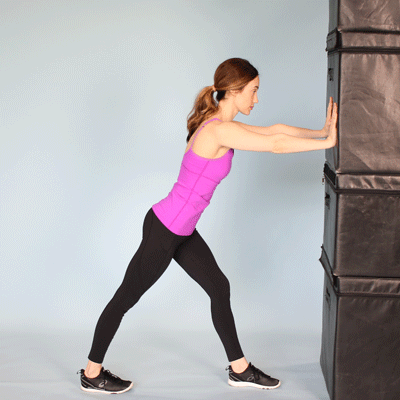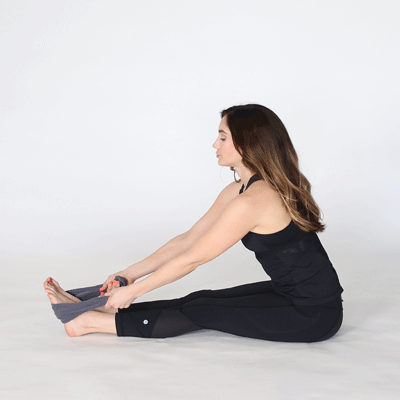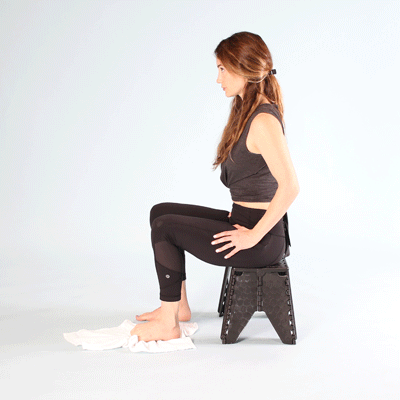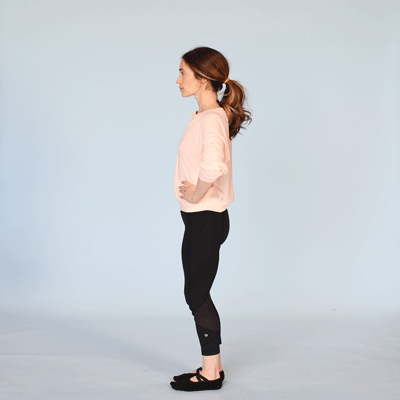The 6 Best Plantar Fasciitis Exercises To Help Relieve Foot Pain
Plantar fasciitis is a common condition characterized by foot pain in the plantar fascia, which is a thick band of tissue that runs along the bottom of the foot. The pain is usually experienced in the heel or arch of the foot, and is often most painful after a period of rest – such as first thing in the morning or after sitting for an extended period.
Plantar fasciitis can be caused by a variety of factors, including overuse, improper footwear, and certain medical conditions. Fortunately, there are several exercises that can help alleviate the symptoms of plantar fasciitis and promote healing. For the most effective exercises, it’s best to see a physical therapist who can assess the foot and prescribe the right plantar fasciitis foot exercises.
Exercises For Plantar Fasciitis
As not every exercise will be suitable for every case of plantar fasciitis, it’s a good idea to see a physical therapist before starting any exercise regime. This will help minimize the risk of any side effects and maximize the benefits of the exercise.
Some of the best plantar fasciitis exercises a physical therapist may prescribe include:
Calf Stretch
Tight calf muscles can contribute to plantar fasciitis as it can place extra strain on the plantar fascia. To perform a calf stretch, stand facing a wall with your hands on the wall at shoulder height. Step back with your affected foot and bend your front knee, keeping the back leg straight. Hold the stretch for several seconds, and then switch sides. Repeat the stretch as per the instructions of the physical therapist.
Toe Stretches
Toe stretches target the small muscles and ligaments in the foot and can help alleviate pain and tightness in the plantar fascia. To perform a toe stretch, sit in a chair with your feet flat on the floor. Place a strap underneath and around your toes, gently pulling back to stretch the muscles in the toes. Hold the stretch for several seconds, and then release. Repeat at the direction of the physical therapist.
Golf Ball Roll
Using a golf ball to massage the bottom of the foot can help relieve tension in the plantar fascia and promote healing. As this exercise must be performed correctly to avoid painful symptoms, it’s best to follow the directions of the physical therapist. They will likely suggest sitting in a chair to reduce the pressure before placing the golf ball underneath the foot. The goal of the exercise is to roll the ball back and forth, applying gentle pressure, to alleviate pressure in the plantar fascia.
Arch Stretch
The arch stretch targets the arch of the foot and can help alleviate pain and tightness in the plantar fascia. To perform an arch stretch, sit in a chair with your affected foot on your opposite knee. Use your hand to gently pull your toes back, stretching the arch of your foot. Hold the stretch for several seconds and then release. Repeat as per the directions of the physical therapist.
Towel Curl
The towel curl exercise targets the small muscles in the foot and can help strengthen them. To perform a towel curl, sit in a chair with your feet flat on the floor. Place a small towel on the floor in front of you and use your toes to scrunch it up, pulling it toward your heel. Release the towel and repeat on the other side.
Heel Raises
Heel raises can help strengthen the calf muscles, which can help reduce strain on the plantar fascia. To perform a heel raise, stand with your feet hip width apart and slowly lift your heels off the ground, rising up onto the balls of your feet. Hold the position for several seconds, and then lower your heels back down to the ground. A physical therapist will regress or progress the exercise as needed.
It's important to note that while these exercises can be helpful for many people with plantar fasciitis, they may not be appropriate for everyone. Always consult with a healthcare professional before starting any new exercise or treatment regimen, especially for those with any underlying medical conditions or concerns about their foot pain.
Plantar Fasciitis Exercises To Avoid
Whilst there are a range of beneficial exercises for plantar fasciitis, there are some exercises that may worsen the symptoms of the condition. A physical therapist can help decide which exercises to avoid and when to restart these exercises. In general, it’s best to avoid the following exercises in the short term:
Heavy exercises: Heavy or weight-bearing exercises that involve pushing or pressing against resistance, such as leg presses or squats, can place excessive stress on the plantar fascia and worsen any symptoms.
Exercise classes: Exercise classes, such as yoga, Pilates, or dance, can place additional stress on the plantar fascia and aggravate symptoms, particularly as the instructors often have varying levels of training and knowledge of injuries.
High-impact activities: Activities that place a lot of stress on the feet, such as running, jumping, or high-impact aerobics, should be avoided until the symptoms improve.
So, if running may aggravate the symptoms of plantar fasciitis, you may ask, “What cardio exercises can I do with plantar fasciitis?” Walking or using a stationary bike are great alternatives to getting in daily cardio. Speak to your physical therapist about how to best integrate these into your exercise regime.
Other Plantar Fasciitis Treatments
Exercise isn’t the only treatment option for plantar fasciitis. In fact, plantar fasciitis is most commonly treated using a combination of therapies and strategies. Visiting a physical therapist is the best way to get the most effective and efficient treatment plan.
In addition to exercises, a physical therapist may also recommend several other treatment options. These include:
Wearing supportive footwear with good arch support and cushioning.
Avoiding high-impact activities, such as running and jumping, until the symptoms improve.
Applying ice to the foot for 10 to 15 minutes at a time, several times a day.
Seeing a doctor for over-the-counter or prescription medication, such as ibuprofen.
Discussing corticosteroid injections with a sports doctor for pain and inflammation.
Considering use of orthotic inserts or custom-made orthotics to provide extra support and cushioning for the feet.
Resting the feet as needed to help reduce pain and promote healing.
In severe cases, surgery may be recommended to address plantar fasciitis that does not respond to other conservative treatments. However, surgery is typically only considered a last resort.
Book Now
Plantar Fasciitis Is Treatable With The Right Help
Plantar fasciitis can be a painful and debilitating condition, but there are several exercises and treatment options available to help alleviate symptoms and promote healing. The best exercises for plantar fasciitis include calf stretches, golf ball rolls, and heel raises.
For anyone experiencing foot pain or who suspects they may have plantar fasciitis, it's important to consult with a healthcare professional to learn about what exercises you can do with plantar fasciitis. With the right treatment plan, it is possible to reduce pain, improve mobility, and get back to normal everyday life.












